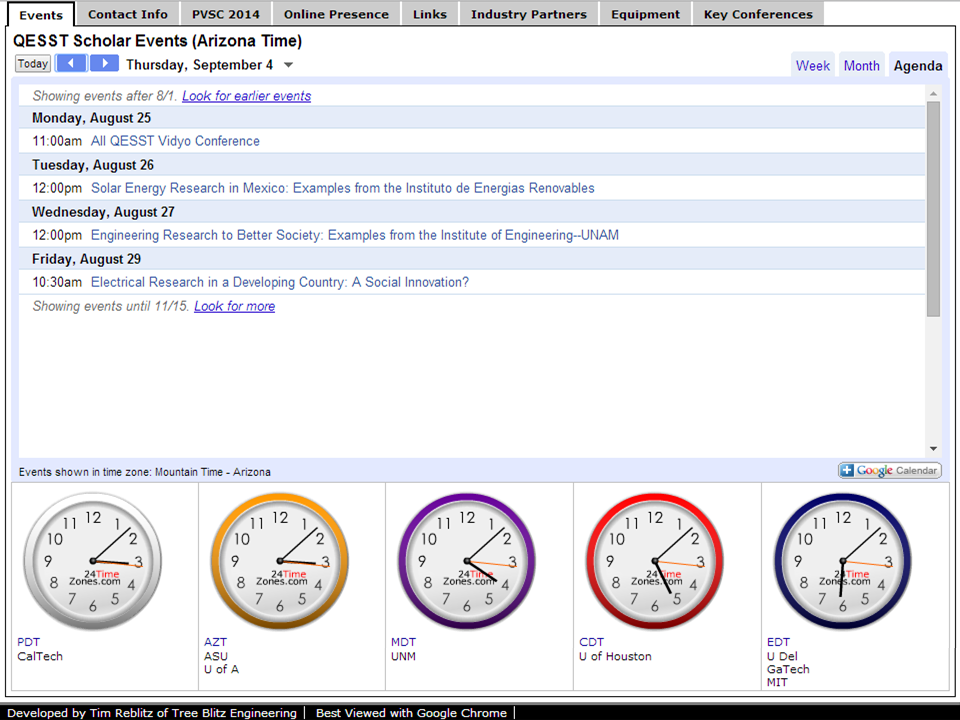8.7.1 Motivation
An important aspect of the SLC's role is that of a liaison between the student community and the center administration, and as a facilitator of communication between staff, students, the NSF, and industry partners on center research, organization, and function. Further, the SLC is seen as a vehicle to promote communication outside of the center and provides an entry point for students wishing to get involved in the center as well as a vehicle for reaching out to pre-college students to interest them in engineering. Thus, communication is a vital aspect of a successful SLC and is addressed in this section to identify best practices for this area.
8.7.2 Communication Best Practices
The center leadership can communicate with the students through email lists, meetings, flyers, websites, in-person communication, newsletters, and through the students' advisors. Communication from the SLC to the students (SLC members and others) can occur through email lists, texts and Twitter, meetings, websites, and in-person communication.
Given the inherent challenge of communicating within any large organization consisting of disparate locations and various disciplines, such as an ERC, such organizations often employ an internal-facing website (intranet) to help solve this challenge. The SLC can easily develop and host an intranet that contains information of common interest to all students (see example below). Such information may include: events calendar; time zones by location; key contact information for the SLC, ERC leadership, and liaisons by partner university; links to the ERC's online presence such as their homepage, LinkedIn page, Facebook page, etc.; links to various shared Google docs wherein a variety of information may be shared and updated; and links to the websites of and contact information for industry partners. The code for the intranet itself need not be complex in nature and could even be as simple as a single HTML file with information formatted in simple HTML tables and links to other websites and hosted images. A screenshot is given below as an example of such a website, including multiple tabs at the top which display examples of some of the content mentioned above.
If ERC students have any concerns they wish to relate to the center administrators or staff, they can raise them through personal communication or e-mail with the administrators or discuss them with the SLC, which acts as a liaison. Students can voice concerns to the SLC and other students through weekly/biweekly/monthly student meetings, the SWOT analysis, or social events. SLC meetings should be open to all center participants so that they can voice concerns there.
Students can learn about other research being conducted in the center through meetings. The best practice is a weekly SLC meeting where the students presenting their research are evaluated by the other students in order to improve their public speaking skills.
If students need to express confidential concerns such as conflicts with faculty or harassment while they are working at the center, they can report to the SLC, administrators, or the ERC's Education Director. If the student is leaving the center, these concerns could be expressed through an exit interview or questionnaire.
SLCs can communicate openings for new undergraduates with the ERC primarily through advertising and undergraduate programs. Advertising can take the form of email, flyers, ads at campus employment offices, and website postings.
Communication between the ERC students or the SLC and industry partners occurs mostly at meetings where industry partners visit, or through students' advisors. Students and industry partners can meet in the form of table discussion or working lunch without the presence of faculty.The best practice to promote communication between ERC students and the NSF is through the annual site visit and the SWOT. The Student Retreat at the ERC Program's Biennial Meeting can also be a good connection to the NSF.
The ERC Association website (www.erc-assoc.org) is potentially a useful means of communication among SLCs and between SLCs and other groups such as industry partners and potential ERC or SLC student recruits. For example, the "Student Portal" area contains contact information as well as resources for use by all SLCs. The Portal main page also lists all current SLCs and the addresses to their web page.


